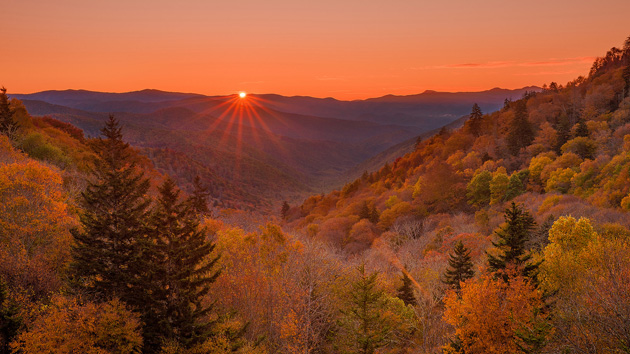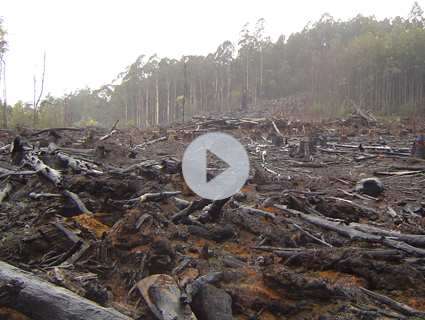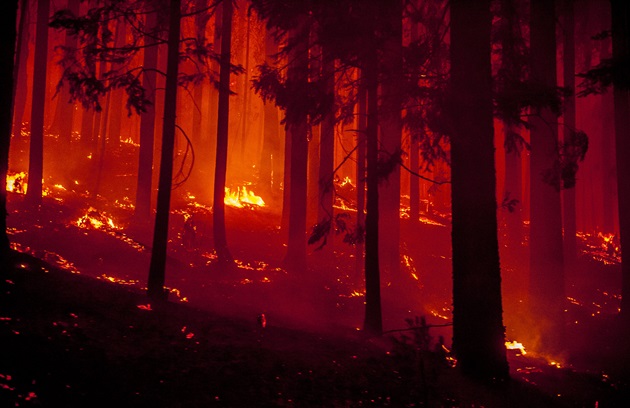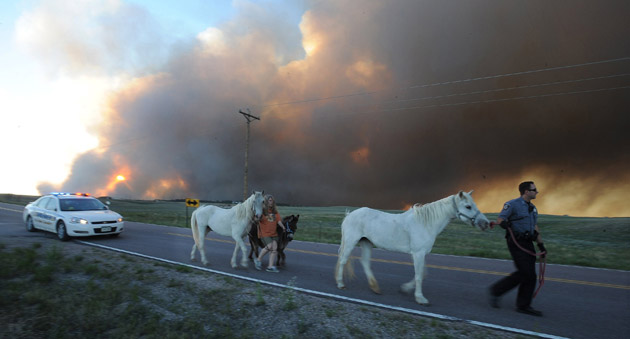
<a href="https://www.flickr.com/photos/tombricker/12604097415/in/photolist-kcMi3p-5eSsvr-5hkay3-gKsvKh-dYcVrV-dWbtzm-h9RhwQ-ppE1CF-e7372B-fSXohE-hUsbXT-dfAFT4-cZNSvU-fpoPfY-4Fwkfs-5eFKvo-mN1tGw-ak2dAU-7Hc47G-o3L96k-kSRrUj-a8ywUP-i6ff39-djXCpB-fp69GM-qhM2A-m1ZMFQ-8CUYbC-eK6Y5w-duFctX-p5cmGX-7Cfs3V-bEmfrY-dnfRab-isTze6-923rmo-fmBDFs-6qvFkR-hUGr3b-pdz9EP-deA3s5-bqDGnU-kisvos-o4zU8e-deQHh3-cbke9q-kyb5En-obVWu9-PqHDJ-8YJ9GM">Tom Bricker</a>/Flickr
This story first appeared on the TomDispatch website.
Let us now praise famous laws and the year that begat them: 1964.
The first thing to know about 1964 was that, although it occurred in the 1960s, it wasn’t part of “the Sixties.” The bellbottoms, flower power, LSD, and craziness came later, beginning about 1967 and extending into the early 1970s. Trust me: I was there, and I don’t remember much; so by the dictum variously attributed to Grace Slick, Dennis Hopper, and others (that if you can remember the Sixties, you weren’t part of them), I must really have been there.
1964 was a revolutionary year. It was a time when Congress actually addressed the people’s business, and it gave us at least three great laws.
One was the monumental Civil Rights Act, which aspired to complete the tragic and sanguinary work of the Civil War and achieve the promise of the Thirteenth Amendment.
The least known of the three was the Land and Water Conservation Fund Act, which, by drawing on revenue from offshore oil and gas leases, provided the means for the federal and state purchase of all kinds of recreational and wild lands, from inner-city parks and playgrounds to habitat for grizzly bears and mountain lions. President Johnson signed that bill into law on September 3, 1964, 50 years ago this month, mere moments after the more famous ceremony that went with his signing of the Wilderness Act.
Like the Civil Rights Act, the Wilderness Act legislated justice. I don’t mean to equate the two laws—no one went to jail or was attacked by police dogs or shot or killed to get the Wilderness Act passed, but it did embody a revolutionary act of justice, nevertheless. It legislated compassion toward the planet by insisting that we humans must stop and leave certain lands alone and not take anything more from them. That third great law of 1964 made a down payment on giving Earth its due. It was that kind of justice.
In 1964, I had only the vaguest inklings about these matters. That summer I was more concerned with the Barry Goldwater literature I was sticking behind my neighbor’s screen doors. Barry Goldwater? The right-wing Republican candidate for president whom the Dems famously branded as trigger-happy with the nuclear arsenal? Yes, that Goldwater. My father, a Republican, was for him, and so I was, too. Could my dad have been wrong? Hell no, not for at least another 10 teenage minutes, after which the old guy seemed to be wrong about nearly everything for the next decade, but that’s not the story I want to tell.
Instead, I want to talk about sex, or at least about seduction, which many people agree is the better part of sex.
Opposition to the Civil Rights Act had a sexual undercurrent. The law itself focused on equal access to buses, trains, drinking fountains, restaurants, restrooms, and hotels; it aimed to end racial and gender discrimination in education and employment. Ultimately, it concerned itself with the promise of the entire American project, for its goal was to honor the “self-evident truth” that “all men are created equal,” as though the nation, after nearly two centuries of equivocation, had finally agreed with what the Declaration of Independence said.
As segregationists had done since before the Civil War, opponents of the bill raised the specter of racial mixing—miscegenation—as a way of rallying white resistance to integration. Racists warned, for instance, that school integration would lead to hanky-panky between young whites and blacks, and didn’t you know where that would lead? The hypocrisy in this, given that rape of black women by white men had been a constant of the plantation world, was of course monumental, but the demagogues, in public and private, ranted on. Ultimately, the Civil Rights Act would stop short of guaranteeing an individual’s freedom to marry or cohabit with whomever he or she chose, but it prepared the way for the 1967 Supreme Court decision in Loving v. Virginia that rendered unconstitutional the anti-miscegenation laws then in force across the South.
In this way—and not just because (in one of the great political surprises of the era) it outlawed discrimination on the basis of gender, as well as race—the Civil Rights Act concerned sex. As the trolls who fought its passage feared, it helped to enlarge the range of socially and legally acceptable seduction.
So, in a way, did the Wilderness Act. But this will take some explaining.
Love Struck in the Wilderness
Flash forward to 1976. In that year I was a skinny kid, 25 years old, living in an isolated village in the Sangre de Cristo Mountains of northern New Mexico (where I still live today). After a big meal and long drink of water, I might have weighed 150 pounds. Thanks to a “Your-Weight-for-a-Dime” machine on San Francisco Street in Santa Fe, I learned that my backpack weighed nearly half of what I did. It was loaded with macaroni and other near-foods. I was headed into the Pecos Wilderness, a high mountain fastness where 12,000-foot peaks circle the headwaters of the Pecos River. I would be gone for two weeks, and I would be alone. My plan was to walk home, to my village, taking the long way.
 All that first day and the day after, my worries rattled inside me like cans in the back of a pickup. Did I pack enough food? Did I bring the right stuff? Would my strength hold out? Would I get desperately lonely with no one to talk to? What if I got hurt?
All that first day and the day after, my worries rattled inside me like cans in the back of a pickup. Did I pack enough food? Did I bring the right stuff? Would my strength hold out? Would I get desperately lonely with no one to talk to? What if I got hurt?
Relief came when I topped a sharp ridge above the timberline, nearly colliding with a six-bird flock of band-tailed pigeons. Only yards away, they wheeled as one, tails spread, air seething through their feathers. I think I felt the soft breath of their wake. “Six-bird flock of band-tailed pigeons”: I wrote down the phrase in my pocket notebook. The words had rhythm; they scanned. Suddenly, the whole world seemed made of poetry.
On the second night, I camped in a dark, still forest, waking repeatedly from shallow sleep, aware of small creatures skittering around me. In the morning, I found that wood rats had chewed off chunks of my camp moccasins. They showed the good judgment, however, to ignore my food.
On the third day, a snowstorm caught me at high altitude in open country. It was only late September, but I should not have been surprised. Winter comes early above timberline, and the storm blew in unseen from behind the mountain I was climbing. Soon, everything was blowing snow, shrieking wind, and a whiteout so thick I could scarcely see the ground. There was no question of seeking better shelter; I stumbled into a copse of wind-tortured, nearly prostrate spruces and pitched my tarp, low and flat, among the gnarled trees. Then I crawled under the tarp to wait out the weather.
The storm seethed for the next 18 hours. Most of the snow flew by horizontally, so fast it may have landed in Texas. In the end, eight or more inches covered the ground. The wind never quit. In the night, when moonlight briefly broke the overcast, I crept out and hiked to the top of the divide. Cumulus clouds, as moist as the spray of waterfalls, boiled up from the Rio Grande Valley. They broke like surf and tumbled across the tundra ridge, their swirls visible in the angry air. Today, I can still see those malevolent, ghostly shapes, all turmoil and beauty. I watched them billow eastward into darkness until cold drove me back to my sleeping bag.
Next day, postholing through the snow, I began to feel different. Something had changed, but I didn’t know what. It was nothing dramatic or decisive, but it mattered and it didn’t go away. Days and miles rolled by, days of camps made, meals cooked, trails lost and found, and the feeling only grew. The first week yielded to a second that was better than the first. Mentally I was in a groove, a zone of my own. Nothing troubled me, not successive storms, short rations, cold, or fatigue.
A day or two from the end of the trip, having set course for home, an explanation came to mind. Somehow the tempest had taught me that moods are like letters. If you can’t mail them, you don’t write them. Since I was alone and had no one to deliver my moods to, I let them go. When I did, I found myself in a frame of mind that was new and different from the mind I’d had before.
You might say that the discovery was a small one, but a lot of growing up consists of small revelations, and understanding that moods are letters was one of mine. As it happened, something else was going on, too.
All of us change when we fall in love, and part of the intoxication of romance is the way we come to love the changes our new relationships cause in ourselves. Up there in the high country, something like that was happening, and I was falling in love.
The Pecos Wilderness was seducing me. I was entering an irrational state of love-struckness as irrational, more or less, as any other.
Lighting Out for the Territories
I later learned that the Hopis have a pretty good word for this. Like most of the entries in the Hopi-English dictionary, this one begins with a k and is about seven syllables long. It translates, as best I remember, as “walking hand in hand and looking dreamily into the eyes of the desired one.” Which describes how I was feeling as I walked home, gazing dreamily into the scenery after two weeks in the embrace of the federally designated Pecos Wilderness Area.
I’ve never gotten over the experience. Years later, having read some anthropology, I came to understand that, notwithstanding my distinctly non-tribal upbringing, I had cooked up a rite of passage for myself, and the wilderness had been its arena. Various friends, I’ve since learned, had similar experiences, which they’ve never gotten over. It doesn’t stop there: if you read much history, you’ll come across others who entered the wilderness and fell the same way.
A few examples:
* In 1806, John Colter, having wet his moccasins in the Pacific Ocean, was traveling back to St. Louis with Captains Lewis and Clark. In present-day North Dakota, however, he had a change of heart: he decided he liked it better in the woods. He asked the captains to discharge him, which they did. Then, he did an about-face and headed west again, plunging into the deep wildness. Eventually, he made it to the country we now call Yellowstone. He’d heard of geysers there and thought he would check them out.
* George Bradley, Billy Hawkins, Andy Hall, and John Sumner barely survived their harrowing 1869 descent of the Colorado River with the indomitable explorer and one-armed Civil War veteran John Wesley Powell. Three of their campmates didn’t fare as well: the Howland brothers and William Dunn elected to walk out of the Grand Canyon rather than continue to test the river’s fearsome rapids, and they died in the attempt. When, after three months of exertion, danger, and suffering, the remaining members of the expedition finally reached the mouth of the Virgin River near present-day Las Vegas, Powell and his notably unstable brother, Walter, returned to civilization via the Mormon settlements. But not Bradley, Hawkins, Hall, and Sumner. They were in no hurry to get to a town. In the expedition’s remaining boats, they kept going down the river, Hawkins and Hall continuing all the way to tidewater, where the Colorado spills into the Gulf of California.
* On Valentine’s Day, 1884, at 3:00 a.m., “Mittie” Roosevelt, mother of Theodore, the future president, died. Eleven brutal hours later and in the same gloomy house, Roosevelt’s beloved young wife, Alice, having given birth only a few days earlier, died as well. In less than half a day, Roosevelt had lost the two most important women in his life. TR was a compulsive diarist. In the place in his diary where the entry for that wretched day should have gone, he drew a big black “X” and under it wrote, “The light has gone out of my life.”
How did Roosevelt recover from such blows? His answer was quintessentially American. He put his newborn daughter in the care of relatives and, like Huck Finn, “lit out for the territories.” In Roosevelt’s case, the territory was North Dakota, where he found a new love, virtually as compelling as the two he had lost. An Eastern-raised son of privilege, he fell in love with the West and its wildness.
* And John Muir! Talk about love-struck! If you can read The Yosemite or The Mountains of California and not see in them a story of seduction and wildly reciprocated love, you should consult your cardiologist immediately.
* And then there are several centuries’ worth of North American captivity narratives recounting the lives of whites who cohabited for extended periods with Indians, only to be recaptured later and brought back to white society. They rarely returned happily. Cynthia Ann Parker, mother of Quanah, the legendary Comanche chief, was typical. She remained morose for the rest of her life, as were many who shared similar fates: they liked it better on the prairie or in the forest. Partly, they loved their adopted Indian families and the culture they adjusted to, but partly, they simply loved the freedom of the land.
One Law, 110 Million Acres of Land Saved for Us All
Hindsight is great. If we were creating the Wilderness Act today, we would write it differently. For starters, a rewritten act might acknowledge that much of what we now call “wilderness” is or was homeland to a broad range of native tribes. Also, half a century later, we know much more about how ecosystems work; we understand the importance of natural boundaries, as opposed to survey boundaries, and we grasp the need for buffer zones and refuges for rare plants and animals. Meanwhile, the fix we are in as a civilization is, frankly, so much worse than it was 50 years ago, and wild lands are more threatened than ever. Climate change is just the tip of that particular iceberg. We continue to transform Earth much more rapidly than we are learning to understand its workings.
Today, however, rather than tote up the peccadillos of the law that Howard Zahniser of the Wilderness Society and others crafted so brilliantly a half century ago, we should take a moment to appreciate the stunning success of the Wilderness Act in protecting the integrity of nearly 110 million acres of wild lands across the magnificence of North America.
The Wilderness Act accomplished something no other law ever attempted on such a scale. Over the decades, it has invited us repeatedly to join humankind’s longest romance, which the Pleistocene painters at Lascaux and Chauvet understood well. It seduces us with the almost heart-stopping beauty of the Creation of which we are a part, a beauty that is the same no matter how you believe it came about.
The greatest thing about that great law, only one of three in 1964, is that it still invites us, even at times forces us (most of us being city dwellers), to fall in love with our beautiful blue planet Earth, the most singular and wonder-filled thing in all the universe. Think of it: in all the universe. If you believe that complexity is an element of beauty, then the complexity of life on this planet, expressed in billions upon billions of strands of DNA, makes it the most beautiful thing in the universe. Period. Hands down. No competition.
That’s our blue miracle of a planet, which the great Carl Sagan once described as “a mote of dust suspended in a sunbeam.”
Given half a chance—and the Wilderness Act gives us much more—who wouldn’t fall in love with that?
William deBuys, a TomDispatch regular, is the author of eight books, including The Last Unicorn: A Search for One of Earth’s Rarest Creatures (forthcoming in March from Little, Brown & Co.). An earlier version of this article was presented on September 5, 2014, in Boulder, Colorado, at a celebration of the Wilderness Act jointly sponsored by the Getches–Wilkinson Center of the University of Colorado Law School and the Wilderness Society. To stay on top of important articles like these, sign up to receive the latest updates from TomDispatch.com here.















